Archaeological Ensemble of Tarraco: Tarraco, modern Tarragona, is located 85 km southeast of Barcelona in Spain. Tarraco was a major administrative and commercial city in Roman Spain. Tarraco was the first Roman settlement on the Iberian Peninsula. In 26 and 25 BC, Tarraco was the residence of Roman Emperor Augustus, he used the city as base for his military campaigns against the tribes of Cantabria and Asturias. Nowadays, several monuments of Roman Tarraco remain. The Roman Wall of Tarraco was built in the 3th century BC, a stretch of 1.5 km remains. The Roman circus is one of the best preserved circuses, the St. Hermenegild Vault supported the upper platform of the Roman circus. The Praetorian Tower is the entrance to the Provincial Forum of Tarraco. The Provincial Forum was built starting from 73 AD and remained in use until the 5th century. The amphitheater of Tarraco was built close to the sea in the 2nd century. The Aqueducte de les Ferreres, also known as Pont del Diable, was built to supply water to Roman Tarraco, the aqueduct is situated four km north of Tarragona. The Tower of the Scipiones and the Arch of Bará are also situated outside Tarragona. The Archaeological Ensemble of Tarraco gained the status as a UNESCO World Heritage in 2000.
www.werelderfgoedfotos.nl © Copyright World Heritage Photos
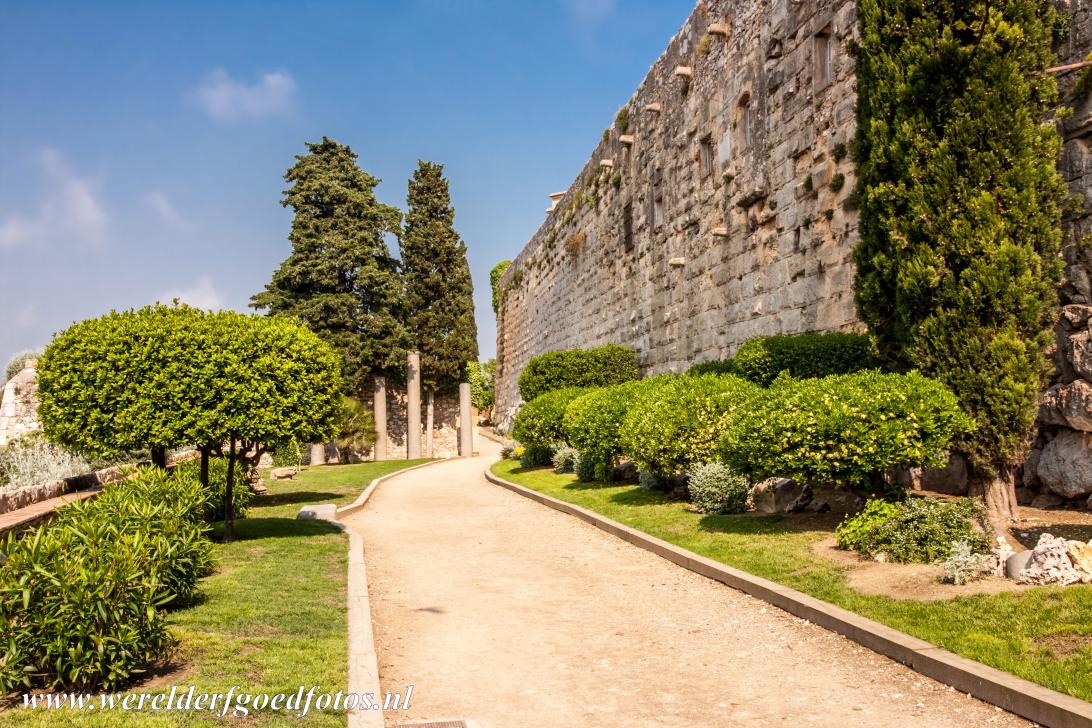
The Archaeological Ensemble of Tarraco, modern Tarragona, is one of the largest archaeological sites of Roman Hispania. Tarraco was once one of the largest Roman cities in Spain. Nowadays, several monuments of Roman Tarraco remain. The Roman Wall was built in the 3th century BC and is the oldest and one of the best preserved Roman monuments of Tarraco. A large number of the Roman monuments of Tarraco were declared a UNESCO World Heritage in 2000.

The Archaeological Ensemble of Tarraco, modern Tarragona, is one of the largest archaeological sites of Roman Hispania. Tarraco was once one of the largest Roman cities in Spain. Nowadays, several monuments of Roman Tarraco remain. The Roman Wall was built in the 3th century BC and is the oldest and one of the best preserved Roman monuments of Tarraco. A large number of the Roman monuments of Tarraco were declared a UNESCO World Heritage in 2000.
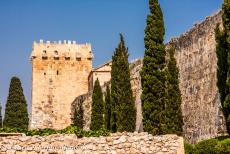
Archaeological Ensemble of Tarraco: The Archbishops Tower is a tower of the Roman Wall. The Roman Wall of Tarraco had several gates and defensive towers. The Archbishops Tower and the Minerva Tower are the best preserved towers of the Roman Wall. The length of the Roman Wall of Tarraco was 4,500 metres, only 1,500 metres are preserved. The defensive system of the wall is one of the earliest examples of Roman military architecture on the Iberian Peninsula.
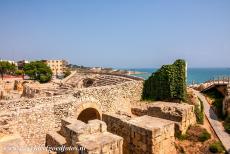
The Roman amphitheater of Tarraco was built near the Mediterranean Sea in the 2nd century, it could accommodate about 15,000 spectators. The amphitheater was used for gladiator games, fights with wild animals, athletic sports, juggling and other entertainment, but the amphitheater was also used for public executions. The Roman amphitheater of Tarraco is part of the UNESCO World Heritage Site: Archaeological Ensemble of Tarraco.
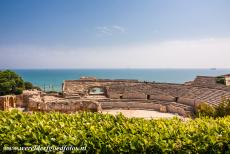
Archaeological Ensemble of Tarraco: The Roman amphitheater of Tarraco, the Mediterranean Sea in the background. The Roman amphitheater was also used to execute prisoners who had been condemned to death. During the persecutions of the Christians, the bishop Fructuós of Tarragona and his two deacons, were burned alive here in 259 AD. A basilica dedicated to the Christian martyrs was built inside the amphitheater in the 6th century.
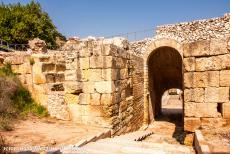
Archaeological Ensemble of Tarraco: The entrance to the Roman amphitheater of Tarraco. The amphitheater is situated just outside the walled Roman city of Tarraco, presend-day Tarragona. The Roman amphitheater was built near the Mediterranean Sea. An archway led directly to the neighbouring beach. The Archaeological Ensemble of Tarraco was inscribed on the UNESCO World List in 2000.
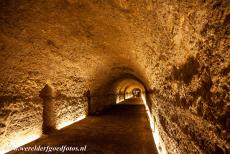
St. Hermenegild Vault of the Roman circus of Tarraco was constructed with mortar and small stones, the vault supported the upper tribune of the Roman circus. Nowadays, much of the St. Hermenegild Vault remains hidden under several 19th century buildings of the modern town of Tarragona. The St. Hermenegild Vault and the the Roman circus are part of the UNESCO World Heritage Archaeological Ensemble of Tarraco.
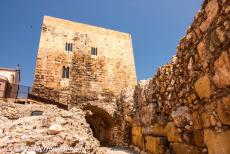
The Praetorian Tower was once the entrance into the Provincial Forum of Tarraco, the tower is also known as the Tower of Pilates or King's Castle. The Roman Emperor Vespasian ordered the construction of the Provincial Forum of Tarraco, the forum was built starting from 73 AD and remained in use until the 5th century. The Praetorian Tower and the Provincial Forum are part of the UNESCO World Heritage: Archaeological Ensemble of Tarraco.
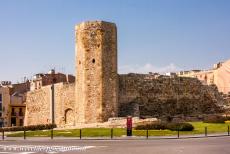
Archaeological Ensemble of Tarraco, modern Tarragona: The tower of the Roman circus. The Roman circus of Tarraco is one of the best preserved Roman circuses in the wold. It was built at the end of the 1st century AD and was probably used up till the end of the 4th century AD. The Roman circus was mainly used for chariot races. The Roman circus could accommodate about 25,000 spectators. A Roman circus is also called a Hippodrome.
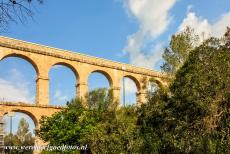
Archaeological Ensemble of Tarraco: The Aqueducte de les Ferreres, also known as the Pont del Diable, is a Roman aqueduct near Tarraco, modern Tarragona. The aqueduct was built to supply water to the Roman city of Tarraco. The aqueduct is situated about four km north of Tarragona. The Pont del Diable is part of the UNESCO World Heritage: Archaeological Ensemble of Tarraco. The Arch of Bará and Tower of the Scipiones are also situated outside Tarragona.
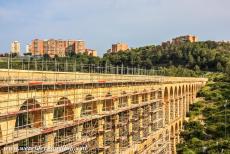
The Pont del Diable, the Devil's Bridge, is probably 2000 years old. The Pont del Diable is part of the UNESCO World Heritage: Archaeological Ensemble of Tarraco. Archaeological Ensemble of Tarraco was inscribed on the UNESCO World Heritage List in 2000. The Roman city of Tarraco, present-day Tarragona, is situated 85 km southeast of Barcelona in Spain. Tarraco was a major commercial and administrative city in Roman Spain.
